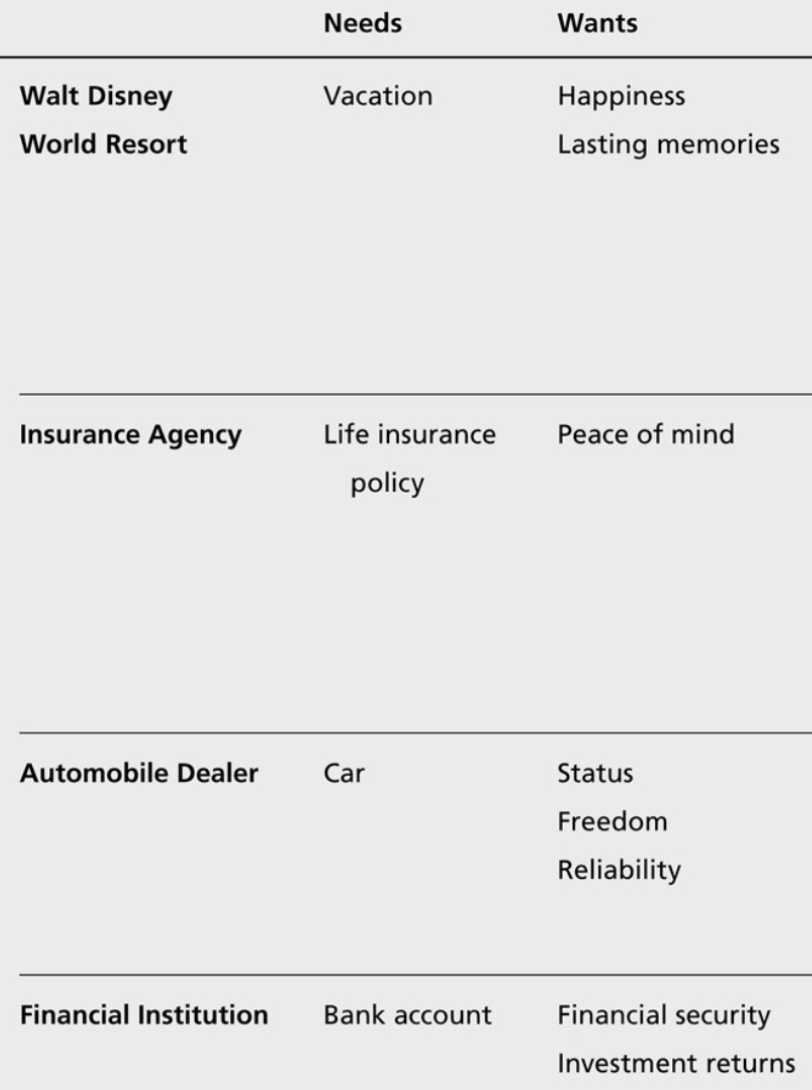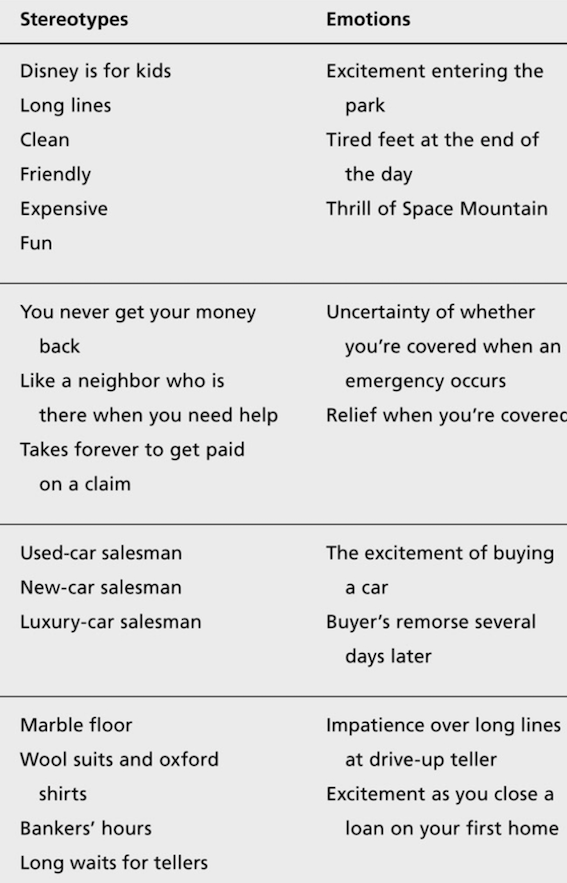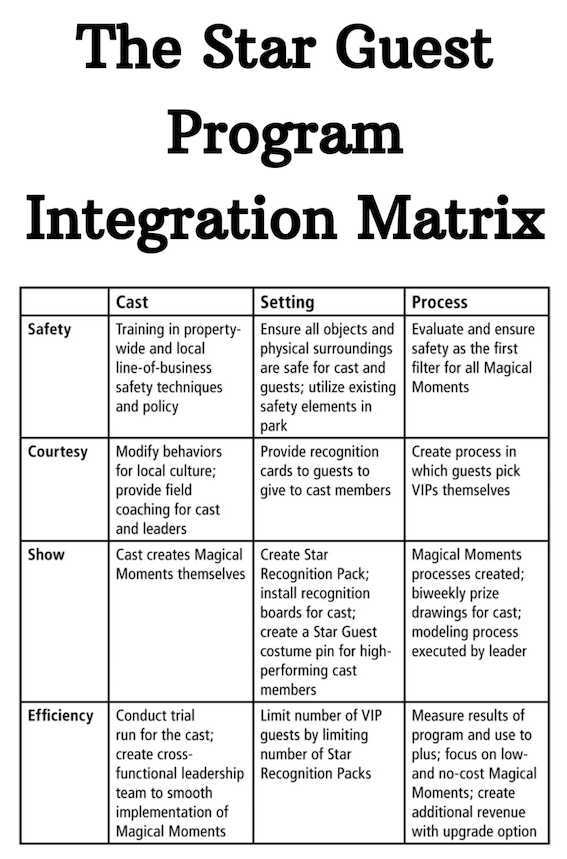Be Our Guest - Walt Disney Company
Note: While reading a book whenever I come across something interesting, I highlight it on my Kindle. Later I turn those highlights into a blogpost. It is not a complete summary of the book. These are my notes which I intend to go back to later. Let’s start!
-
Magic is a common word in the executive suites at The Walt Disney Company. “Our guests want to be amazed, delighted, and entertained,” says Bob Iger. “They are looking for the kind of magic that will transport them from their everyday lives into worlds that can only be created by Disney.”
-
Exceeding guests’ expectations is Disney’s service strategy, and paying attention to every detail is the tactic by which it is accomplished
-
Exceeding expectations by attending to the details is how you can create practical magic for your customers, but it is not, in and of itself, sufficient to drive the day-to-day work of Quality Service
-
The Quality Service Compass has four main points: guestology, quality standards, delivery systems, and integration. Our service objective—to exceed guest expectations—resides at the center of the compass
-
Compass Point 1: Guestology Guestology is what Disney calls the art and science of knowing and understanding customers. It is the first point on the compass because the needs, wants, perceptions, and emotions of guests are the basis for the action that takes place in all of the other points. Guestology establishes an initial course of action, and as new customer information is gathered, that data is used to fine-tune and improve performance
-
Compass Point 2: Quality Standards Once you have defined your service goals, you can begin to consider quality standards, the second point on the Quality Service Compass. Quality standards serve two purposes: they establish the criteria for actions that are necessary to accomplish the service strategy, and they serve as the measures of Quality Service. At the Disney resorts and parks, there are four quality standards. In order of importance, they are safety, courtesy, show, and efficiency
-
Compass Point 3: Delivery Systems With a common purpose and quality standards in place, we move to the next point in the Quality Service Compass— delivery systems. There are three service-delivery systems that all companies share: their employees, their setting, and their processes
-
Compass Point 4: Integration The last point in the Quality Service Compass is integration. Integration means quite simply that the three delivery systems are combined and aligned to create a complete operating system. Cast, setting, and process are merged in pursuit of the service strategy. The result: an exceptionally high-quality guest experience that drives the success of all organizations known for service excellence
-
-
At Disney Institute we study people’s needs, wants, stereotypes, and emotions, and we can create a new compass model—called the Guestology Compass—to express them
-
Needs are the easiest of the four compass points to determine. What do guests need when they come to Walt Disney World? A vacation. What do they need when they go to a BMW retail center? A car. Needs tend to be obvious, usually corresponding to the products and services you offer, but they only provide the rough outline of a psychographic profile
-
Wants are less obvious. They suggest a customer’s deeper purpose. Many of Walt Disney World’s guests want more than a simple vacation; they also want long-lived memories of a fun-filled family experience. BMW’s customer may want the status of a high-performance car. As you begin to uncover wants, the contours of the customer profile take shape, which may cut across demographics, geographies, and other traditional marketing approaches

-
Stereotypes are those preconceived notions that every customer has of your business or industry. Guests come to Disney’s parks expecting the cast members to treat them a certain way. At the BMW dealership, customers will expect the technicians to treat them a certain way. As you identify guest stereotypes, you obtain valuable clues about their expectations. These clues help us fill in the features of the guest portrait
-
Finally, emotions are the feelings that customers experience throughout their contact with your organization. At Walt Disney World, guests are likely to have a wide range of emotions during their visit. Some are positive, such as the excitement of riding the Rock ’n’ Roller Coaster, and some are negative, such as impatience with long lines. At BMW, car buyers experience a similar range of emotions. They may feel proud and excited driving off in their new cars and apprehensive returning for their first service visits. The goal of both businesses is to create a positive emotional connection even when customers are actually deducting the cost of their purchase from their bank accounts. (How many of your customers still say “wow” after making payment?) Identifying the changing emotional state of customers completes the coloration of the profile

- Disney’s common purpose declares a goal (to create happiness), states how that goal is to be accomplished (by providing the finest in entertainment), and defines a customer base (people of all ages, everywhere)

-
Dick’s four quality standards elements were Safety, Courtesy, Show, and Capacity (which was later relabeled Efficiency), and today, they are still the quality standards for the Disney parks and resorts business. They represent how the common purpose is fulfilled and offer a set of filters that help Disney employees to judge and prioritize the actions that contribute to the guest experience
-
The Disney parks and resorts have prioritized their quality standards: safety > courtesy > show > efficiency. Once you know these priorities, the solution to the problem becomes clear. The cast member immediately knows to put the safety of a guest with disabilities ahead of the efficiency of the loading process, the continuity of the show, and even the courteous treatment of another guest. Prioritized quality standards act as the guiding signals in the pursuit of exceeding guest expectation
-
With guestology and quality standards to guide us, it is time to start exploring the delivery of Quality Service. At Disney, as in all organizations, there are three major service-delivery systems. These systems are the methods by which Quality Service is implemented, and they are cast, setting, and process
- Training for new cast members involve 4 tiers:
- The first tier is a global orientation, which is conducted at Disney University and teaches concepts and behaviors that are common to every cast member throughout the organization
- The second tier is line-of-business training that cast members require for their job category. For example, all new food-service cast members are taught food-safety procedures
- The third tier is a local orientation that encompasses the location-specific information that is needed to perform in the different business units of the resort
- The fourth tier is on-the-job training, which is conducted after the new cast members assume their roles
-
All newly hired cast members start their tenure at Disney with Traditions, a one-day orientation program taught by Disney University, the internal training arm of the company
- Traditions is designed to accomplish four major purposes:
- To acclimate new cast members to the foundations of the culture
- To perpetuate the language and symbols, heritage and traditions, quality standards, values, and traits and behaviors of the Disney parks and resorts
- To create a sense of excitement about working for Disney
- To introduce new cast members to the core safety regulations
- Disney’s Guidelines for Guest Service:
- Make Eye Contact and Smile!
- Start and end every guest contact and communication with direct eye contact and a sincere smile
- Greet and Welcome Each and Every Guest
- Extend the appropriate greeting to every guest with whom you come into contact. “Good morning/afternoon/evening!” “Welcome!”/“Have a good day!” “May I help you?”
- Make guests feel welcome by providing a special differentiated greeting in each area.
- Seek Out Guest Contact
- It is the responsibility of every cast member to seek out guests who need help or assistance.
- Listen to guests’ needs
- Answer questions
- Offer assistance (taking family photographs, for example)
- Provide Immediate Service Recovery
- It is the responsibility of all cast members to attempt, to the best of their abilities, to immediately resolve a guest service failure before it becomes a guest service problem
- Always find the answer for the guest and/or find another cast member who can help the guest
- Display Appropriate Body Language at All Times
- It is the responsibility of every cast member to display approachable body language when onstage
- Attentive appearance
- Good posture
- Appropriate facial expression
- Preserve the “Magical” Guest Experience
- Always focus on the positive, rather than the rules and regulations
- Talking about personal or job-related problems in front of our guests is unacceptable
- Thank Each and Every Guest
- Extend every guest a sincere thank you at the conclusion of every transaction
- Extend every guest a thank you or similar expression of appreciation as he/she leaves your area
- Six Tips for Culture-Building:
- Keep it simple. everyone must feel comfortable with the culture. Leave room for individuality and personality
- Make it global. everyone at the site, including management, must buy in
- Make it measurable. Create specific guidelines, and make them a part of the performance-assessment process
- Provide training and coaching. Incorporate the elements of the culture into employee training and ongoing performance coaching. encourage peer-to-peer coaching
- Solicit feedback and ideas from the team. Foster a sense of ownership, and expand the pool of creative input by allowing employees to contribute to the show
- Recognize and reward performance. build employee motivation through formal and informal reward and recognition programs
- Quality Service Cues:
- Make a memorable first impression: First impressions are lasting ones. Start sending the right messages to prospective and new employees from the very first point of contact
- Communicate the heart and soul of the organization first: your heritage, values, common purpose, and quality standards are more important than the paperwork associated with new hires. Use new-employee orientation sessions to communicate your organizational vision and culture
- Speak a service language; wear a service wardrobe: how you look and how you speak communicates an image in the customer’s mind. make sure that your appearance and language reflect your brand of Quality Service
- Establish a set of basic performance guidelines: The guidelines are a set of behaviors that ensure that employees know how to act courteously and respect the individuality of each guest. They form the baseline for delivering and measuring Quality Service performance
- Build a performance culture: performance cultures are sets of location-specific behaviors, mannerisms, terms, and values that direct and enhance an employee’s role in a specific business unit. They use shared values, visions, and missions to help the workforce optimize and customize service delivery
-
Disneyland is like Alice stepping through the Looking Glass; to step through the portals of Disneyland will be like entering another world. —Walt Disney
-
Setting is the environment in which service is delivered to customers, all of the objects within that environment, and the procedures used to enhance and maintain the service environment and objects. It is a critical point on the Quality Service Compass, and it is vital that settings be designed and managed to effectively communicate and deliver service to customers
- List of setting-design principles/ Mickey’s Ten Commandments:
- Know your audience: Before creating a setting, obtain a firm understanding of who will be using it
- Wear your guest’s shoes: That is, never forget the human factor. Evaluate your setting from the customer’s perspective by experiencing it as a customer
- Organize the flow of people and ideas: Think of setting as a story, and tell that story in a sequenced, organized way. Build the same order and logic into the design of customer movement
- Create a “wienie”: Borrowed from the slang of the silent-film business, a wienie was what Walt Disney called a visual magnet. Such a magnet is a visual landmark that orients and attracts customers
- Communicate with visual literacy: Language is not always composed of words. Use the common languages of color, shape, and form to communicate through setting
- Avoid overload—create turn-ons: Do not bombard customers with data. Let them choose the information they want when they want it
- Tell one story at a time: Mixing multiple stories in a single setting is confusing. Create one setting for each big idea
- Avoid contradictions; maintain identity: Every detail and every setting should support and further your organizational identity and mission
- For every ounce of treatment, provide a ton of treat: Give your customers the highest value by building an interactive setting that gives them the opportunity to exercise all of their senses
- Keep it up: Never get complacent, and always maintain your setting
-
Processes, in their broadest meaning, are a series of actions, changes, or functions that are strung together to produce a result. They combine human (cast) and physical (setting) resources in various ways to produce different outcomes
-
All organizations can be thought of as a collection of processes
-
Process is the engine of Quality Service. Engines are driven by combustion. A diesel or gasoline engine is powered by internal combustion. The fuel is fired inside the engine; it explodes and moves the pistons. In a steam engine, the combustion takes place outside the engine in a boiler that creates pressurized steam that in turn moves the pistons. Service processes are more like a steam engine. The combustion is externally produced— by guests. It derives from their satisfaction and repeat business and recommendations. For the purposes of Quality Service, guest-produced combustion is the best kind. When guests are powering the engine, we know that the process is focused properly on their needs. When service processes work smoothly, their key combustion points are controlled. Quality Service is delivered without a hiccup and everyone wins. However, when combustion points are out of control, service processes misfire. Guests are inconvenienced, and unless their problems are solved, combustion points can easily turn into explosions. Identifying and controlling combustion points are an important part of delivering service through process
-
The best way to identify key combustion points is to study your customers. What do they complain about? Where do they get stuck during the service experience? What are the common problems they face when interacting with your organization? The answers to these questions are combustion statements. Combustion statements are important clues to the process issues you need to address in order to deliver magical service
-
Take a process orientation to service delivery. roughly three-quarters of service is delivered via processes. processes are the policies, tasks, and procedures used to deliver service
-
Collect and analyze combustion statements. Combustion statements indicate service issues that need to be solved. Listen to and study your guests to identify and optimize those issues before combustion points become explosion points
-
Optimize guest flow throughout the service experience. Create the perfect service flow by optimizing the operation of products and services, allowing guests to self-manage their experience, and effectively managing unavoidable waits
-
Equip your cast to communicate with guests. Fielding questions immediately is an important component of customer satisfaction. provide your cast with the right information in the right manner at the right time
-
Create processes for guests who need service attention. Treat all of your guests like VIps—very important, very individual people. Identify guests who need service attention, such as children, international customers, and people with disabilities, then implement processes designed to ensure they get a positive service experience and communicate those processes throughout the organization
-
Debug service processes continuously. “plus” your service processes at every opportunity. Fix design flaws and oversights, adapt new technologies and techniques, and solve your customers’ problems before they ask for help
-
Build a service organization greater than the sum of its parts with integration. Integration is the work of aligning and distributing your service standards over the three delivery systems of cast, setting, and process
-
Meet guest expectations with headliners; then plus the experience to exceed expectations. headliners are those combinations of standards and delivery systems that are natural matches. at the Disney parks and resorts, they are cast and courtesy, setting and show, and process and efficiency. The remaining combinations can be used to distribute service standards in unexpected ways to surprise and delight guests
- Make the Integration Matrix part of your organizational toolbox. The Integration matrix is an expanded tic-tac-toe board that combines service standards and delivery systems. Use it to analyze and manage the design and development of Quality Service

-
Manage every service moment. on the Integration matrix, each combination of a service standard and a delivery system represents a service moment of truth. each should be fully considered and developed to deliver a magical service moment
-
Choose service solutions that are high-touch, high-show, and high-tech. When analyzing service solutions, look for those that meet a guest’s need for interaction, vivid presentation, and efficiency.
-
Plan and manage solution implementations using storyboards. Use storyboards—visual maps of service solutions—as an aid to implementation